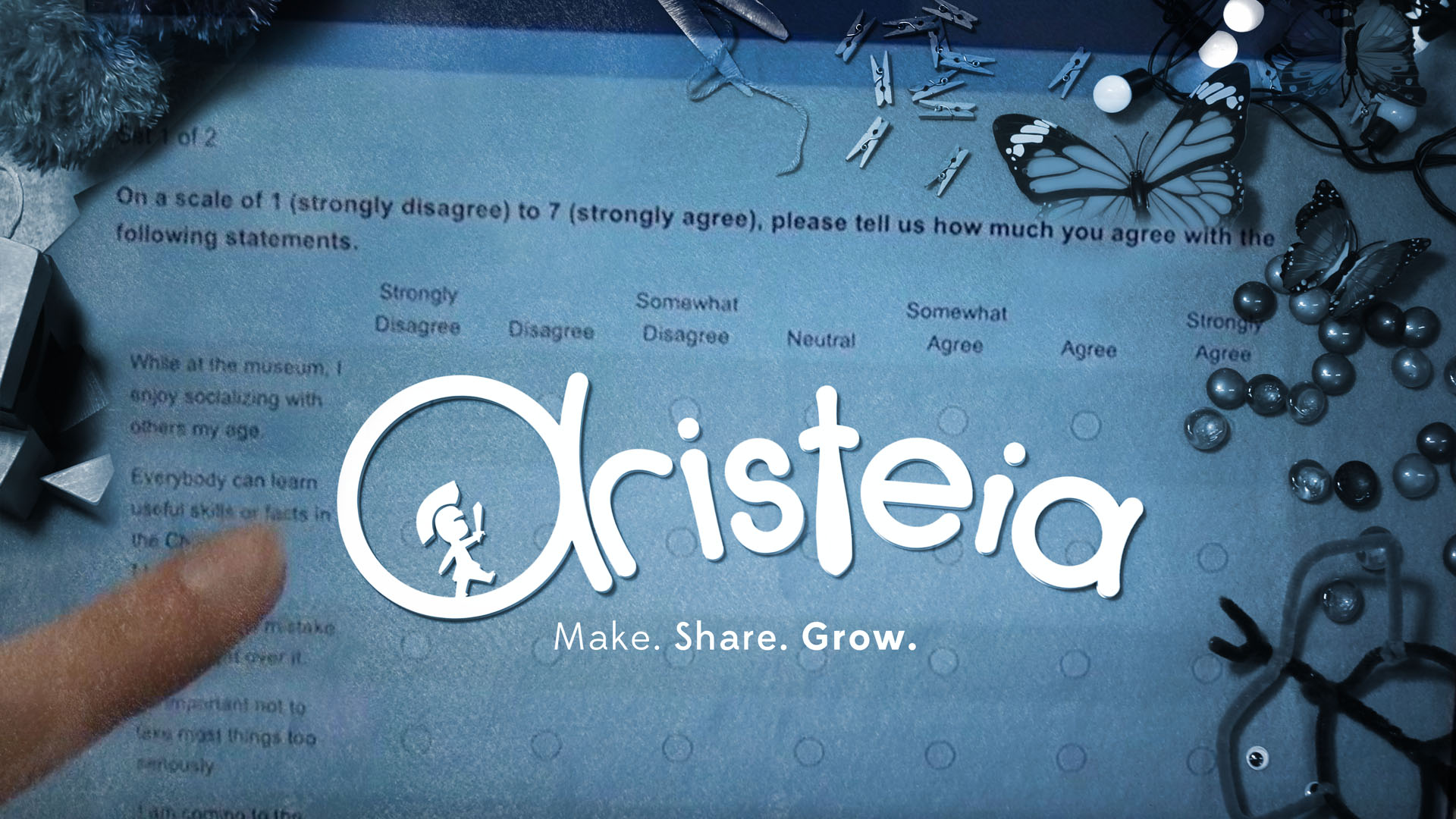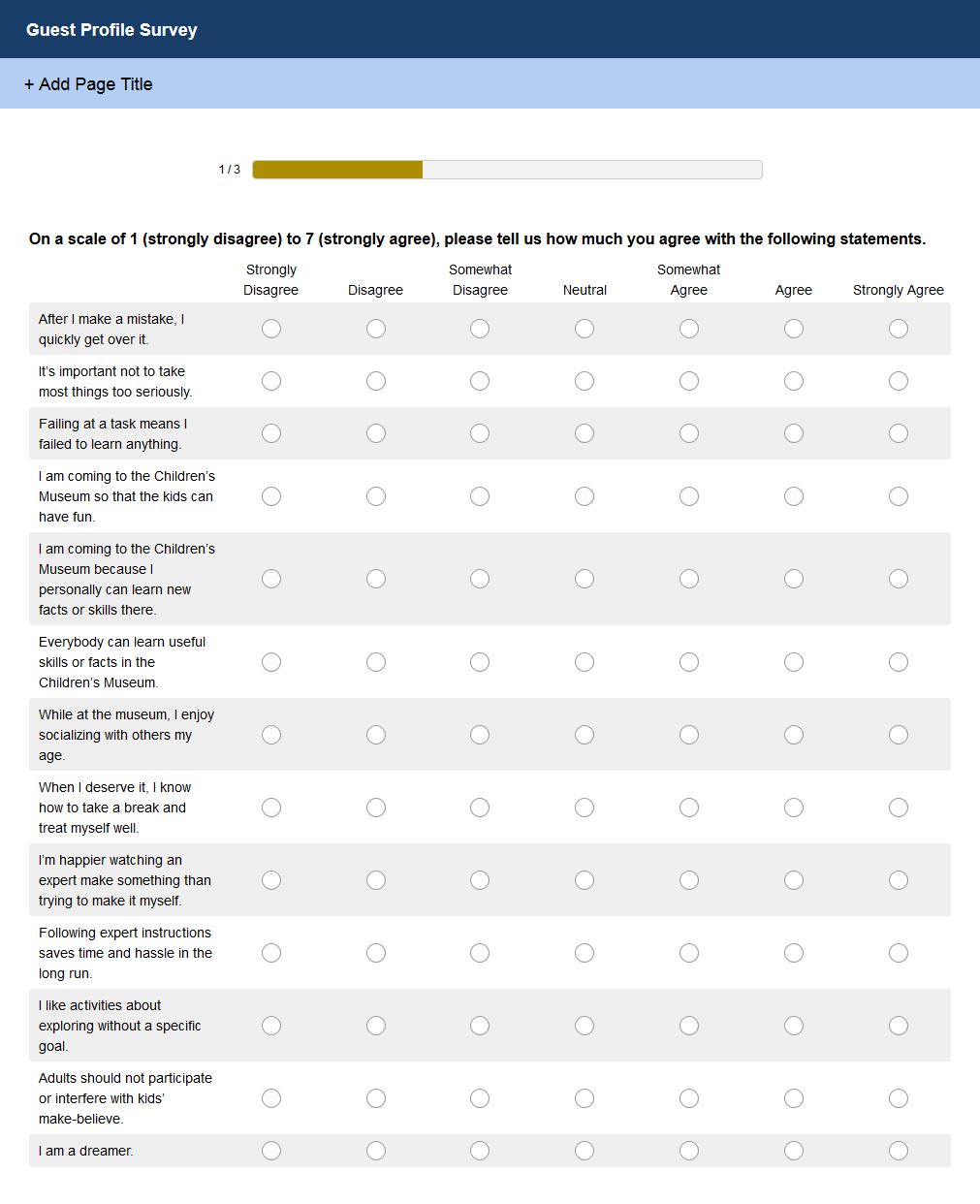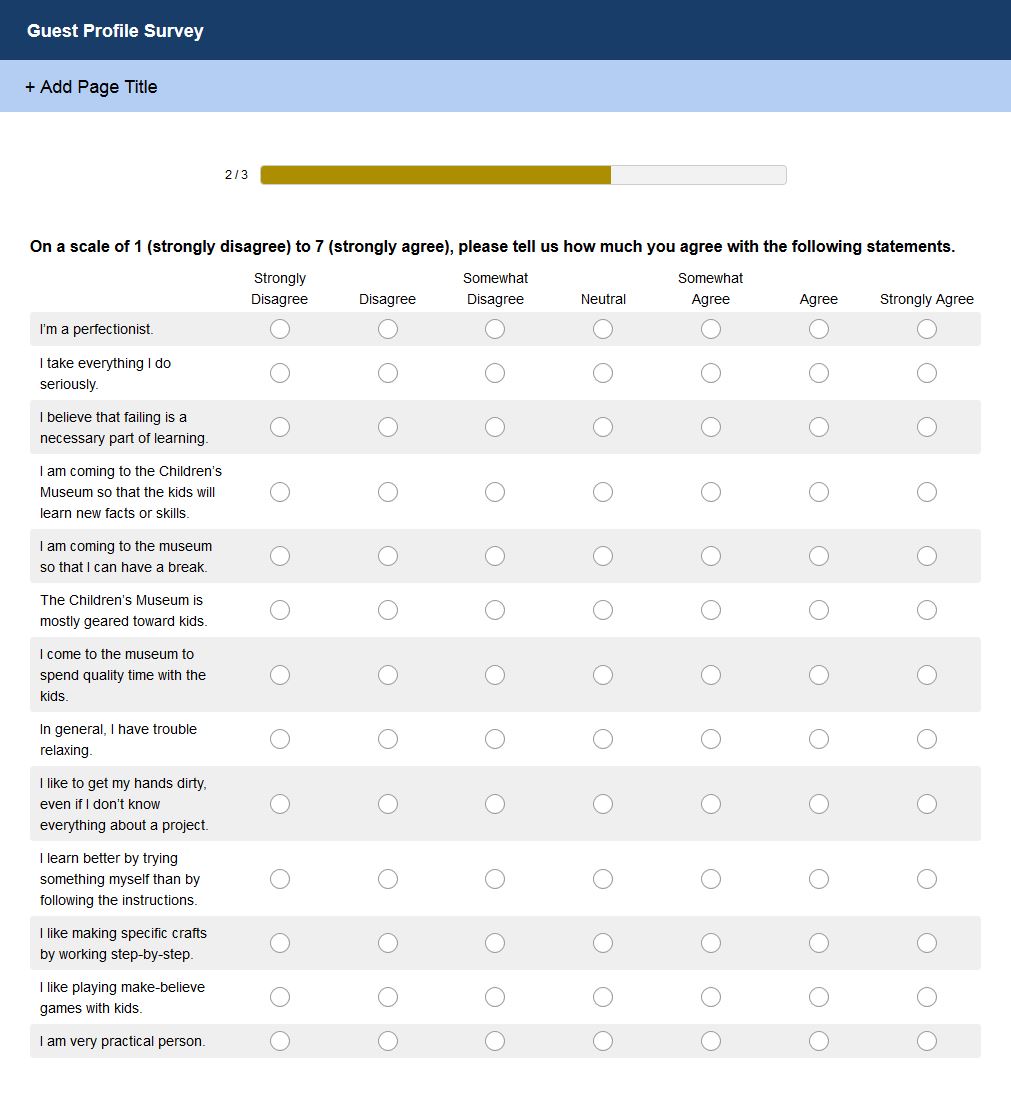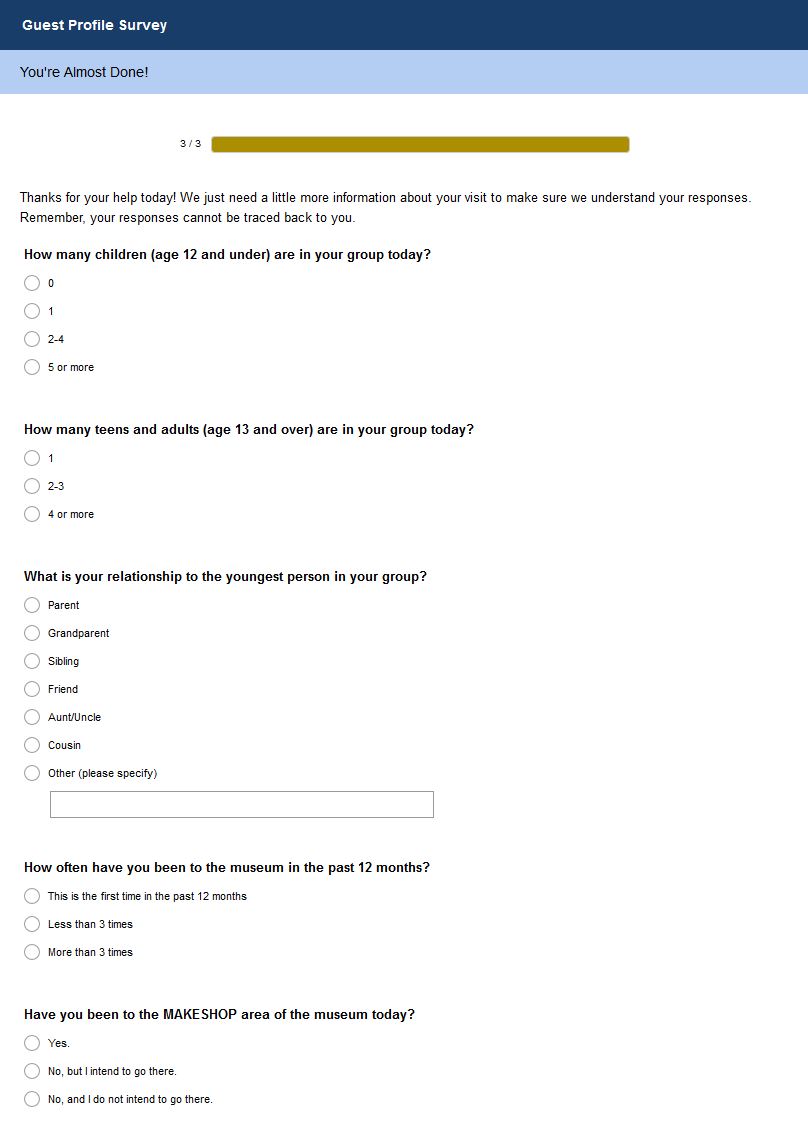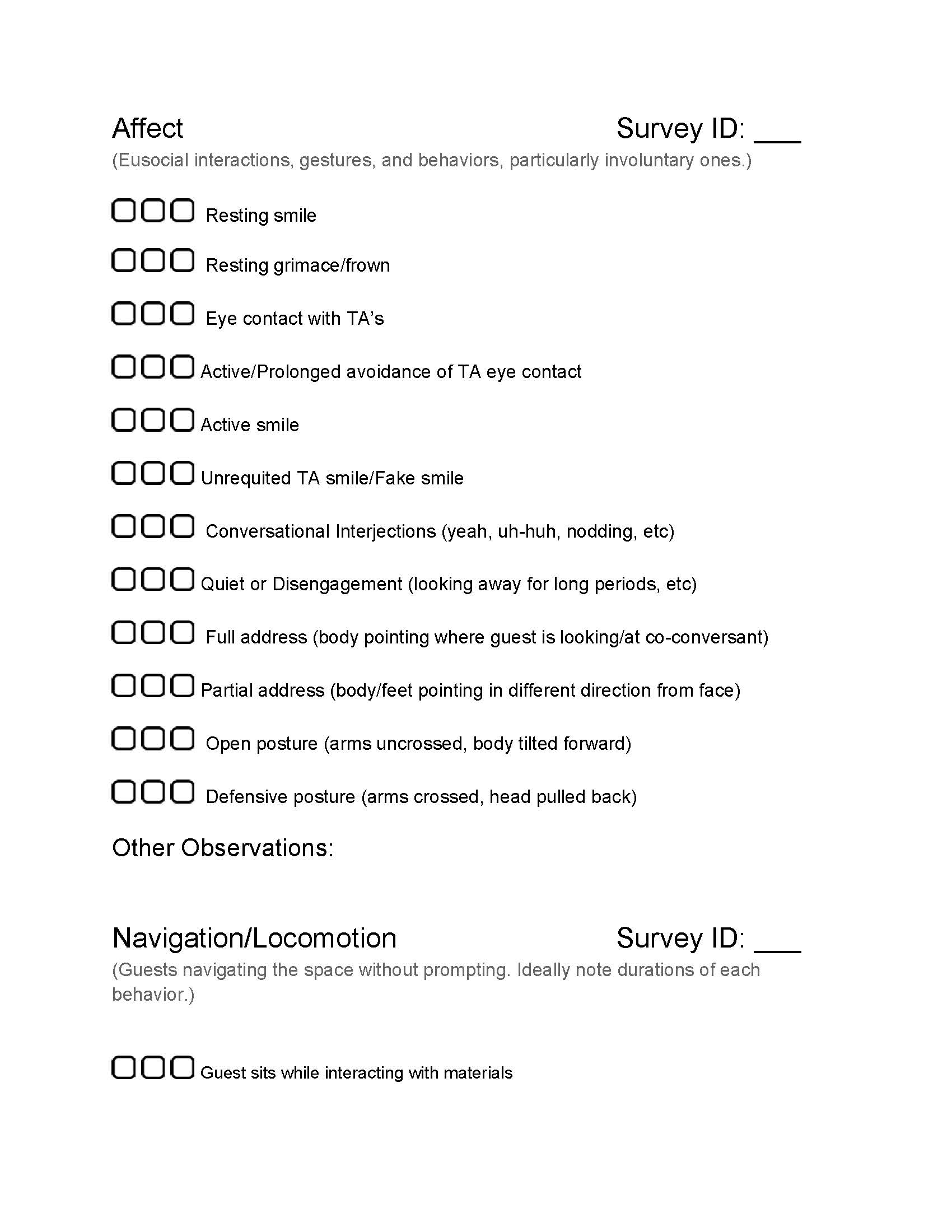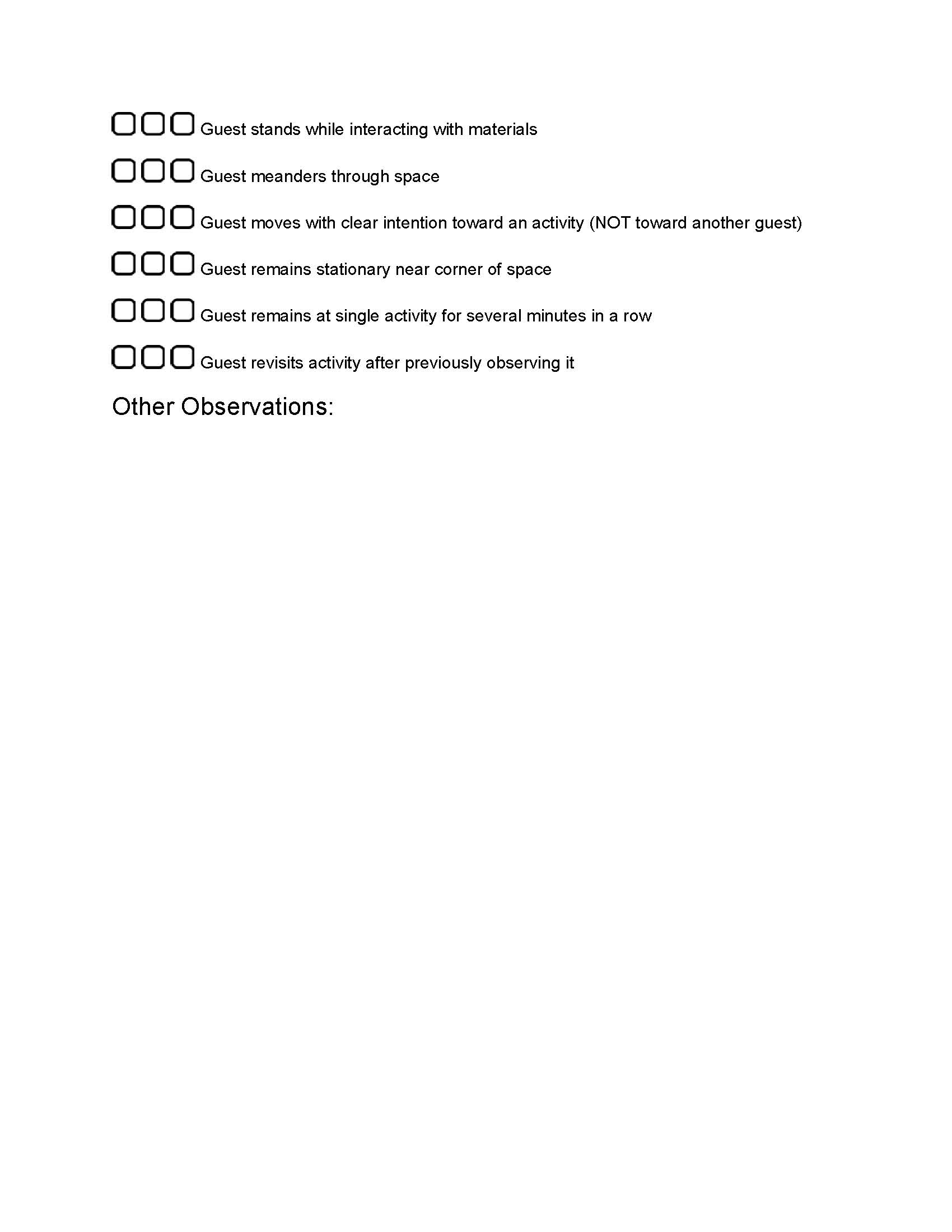Guest Profile Survey
Ground Truth Checklist
A Statement from Antonin “Tony” Fusco
In order to examine which facets of parent behavior clustered to form factors, with the hope that those clusters would correspond to our proposed factors, we developed a 26-item questionnaire consisting of 13 pairs of questions we proposed might be inverses of each other. Since many of the questions revolved around motivation for coming to the museum, and therefore didn’t have obvious opposites, we paired those questions with divergent motivations, on the assumption that people would tend to agree with on in the set over the other. These question pairs looked like:
I am coming to the museum because I personally can learn new facts and skills there.
I am coming to the museum so that my kids can learn new facts and skills.
Our theory was that “invested” parents would favor the first answer, though both might be high, and that “disengaged” parents would rate the first poorly and the second very highly. After the survey was distributed, we found that all the questions referring to kids correlated, and all the ones that referred to personal learning correlated, but surprisingly, those two groups of questions were independent. Furthermore, questions about personal learning correlated to questions about recovering from past failures, where questions about family learning had more to do with whether the activities and learning in the museum was important. This led us to our new definitions for the “motivation” and “resilience” axes.
Finally, the third axis, which we had assumed would in some way refer to “lateral thinking,” became the aspirational axis. This was the biggest jump for us, but it was also the most important, since it suggested that the exploratory behavior we were targeting in our guests was not a single axis, but a product of all three (as evidenced by the way the questions pointing at lateral thinking were spread across our factors, rather than congregating in a single one). On reflection, the team felt that this better described our observations, so the model was updated to reflect this new development.
It was an exciting few weeks when we got these results back, and we are thrilled that the results were both significant and theory-relevant.
